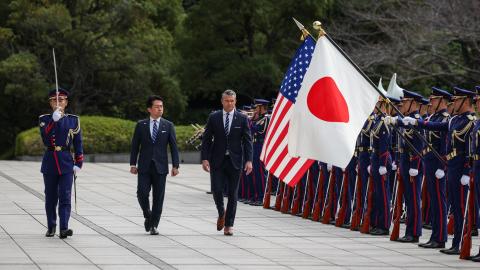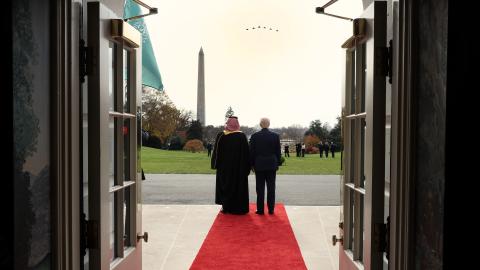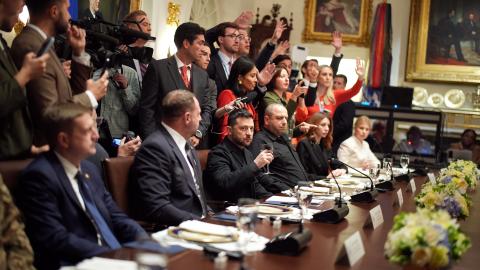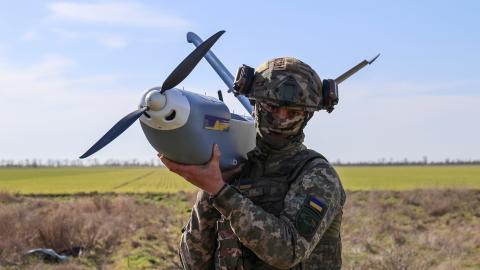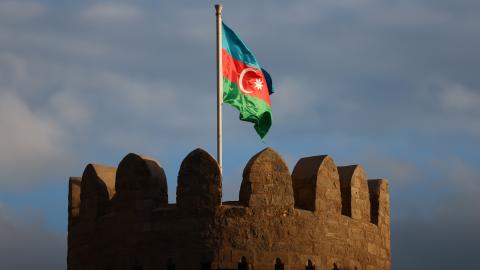At a meeting in Tashkent, Uzbekistan, last Sunday, the leaders of the five Central Asian states — Kazakhstan, Uzbekistan, Turkmenistan, Kyrgyzstan and Tajikistan — made an important decision that could have geopolitical ramifications for Eurasia. At the Seventh Consultative Meeting of the Heads of State of Central Asia, also referred to as the C5, the leaders agreed to formally add Azerbaijan to the format. Going forward, this body will be known as the C6.
The C5 format has helped the five countries of Central Asia facilitate deeper cooperation, especially in the fields of trade, economics, culture and energy. It was created after these states regained their independence following the collapse of the Soviet Union and has served as the major platform for regional cooperation in Central Asia.
It has also been used for the region’s external relations. For example, just last week, US President Donald Trump hosted a summit marking the 10th anniversary of the C5+1 format, which is the platform that brings Washington into regular engagement with the region. Bringing Azerbaijan formally into the format was the logical next step in the evolution of this grouping.
One only has to look at a map to understand why. Azerbaijan is in a strategic location. Situated on the western shore of the Caspian Sea, it serves as one of the primary gateways for Central Asia to reach European and global markets. In recent years, Azerbaijan and the countries of Central Asia have significantly increased their bilateral relations.
Over the past three years, Azerbaijani President Ilham Aliyev has made 14 visits to Central Asian countries, while his Central Asian counterparts have paid 23 visits to Azerbaijan. This is a reminder that old-school diplomacy can have a big impact. With this growing level of engagement, it makes sense that the countries would formalize a more regional grouping into the C6.
There are three main reasons why closer cooperation on both sides of the Caspian Sea makes sense for the region.
The first is geopolitical reality. The Central Asian states are trying to diversify away from an overreliance on the Russian and Chinese markets. While they do not seek to replace their engagement with these countries, they are always looking for alternative and additional markets as part of their broader balancing approach to foreign policy and their need to grow economically. Looking south, the uncertainty in Afghanistan and the continued tension between India and Pakistan make that route an unrealistic option. For Central Asian states, looking westward offers far greater opportunities, especially as they seek reliable access to global markets.
The second reason is the existence of well-established transport and trade links that run from Azerbaijan through the South Caucasus to Europe and beyond. This route is referred to as the Trans-Caspian International Transport Route, commonly known as the Middle Corridor. It includes many of the region’s major oil and gas pipelines, rail connections, motorways, fiber-optic cables and air corridors that bypass both Russia and Iran through the heart of the South Caucasus.
Azerbaijan is a key hub for this route, so bringing Baku into the fold makes sense for the Central Asian states. This is especially true as Trump’s efforts to bring peace between Armenia and Azerbaijan, and the possibility of normalization between Turkiye and Armenia, create new transportation, trade and energy opportunities that Central Asian states could benefit from.
Finally, Azerbaijan shares a common Turkic heritage with most of the Central Asian republics. Other than Tajikistan, the other four are linguistically, culturally and ethnically Turkic-majority countries. And with the rise of the Organization of Turkic States, a body founded to increase cooperation among the ethnically Turkic countries of Eurasia, connecting Azerbaijan and Central Asia in another important format such as the C6 makes perfect sense.
The implications of the newly established C6 and the trade, transit and energy opportunities it will provide are not limited to the region. There could also be a positive impact in the Middle East, especially in the Gulf.
Turkiye is leading an ambitious project called the Dry Canal corridor, intended to link Iraq’s southern coast and the Gulf to Turkish ports on the Mediterranean by the late 2030s. This plan includes construction of a new rail line and road network spanning Iraq and linking to Turkiye. There are also plans to reconstruct a rail link that once connected Mosul in northern Iraq with the Turkish city of Gaziantep. It is not unrealistic to assume that the road and rail networks of the Dry Canal could eventually link up with those currently used by the Middle Corridor and the South Caucasus as they converge into Turkiye.
The opportunities for trade and transit between the Gulf and Central Asia could grow even more if the proposed Gulf Railway, designed to connect the six Gulf Cooperation Council states by rail, becomes a reality. In theory, goods from as far away as Duqm Port in Oman could reach markets in Central Asia using the Middle Corridor.
And the importance of Azerbaijan and Central Asia has not gone unnoticed by many Gulf states. In recent months, we have seen the UAE and Saudi Arabia sign multibillion-dollar agreements with Kazakhstan and there are indications of growing Gulf interest in Azerbaijan as well. These engagements — ranging from energy and trade to broader investment discussions — may be planting the seeds for future interregional connectivity.
While the world is focused on the Gaza peace plan, the continued fighting between Russia and Ukraine and the US military buildup around Venezuela, the decision by the Central Asian states to add Azerbaijan and create the C6 might not get the attention it deserves. But if the right policies are pursued, this could prove to be a turning point in Eurasian economic growth, trade and connectivity, bringing benefits to the region and beyond.
